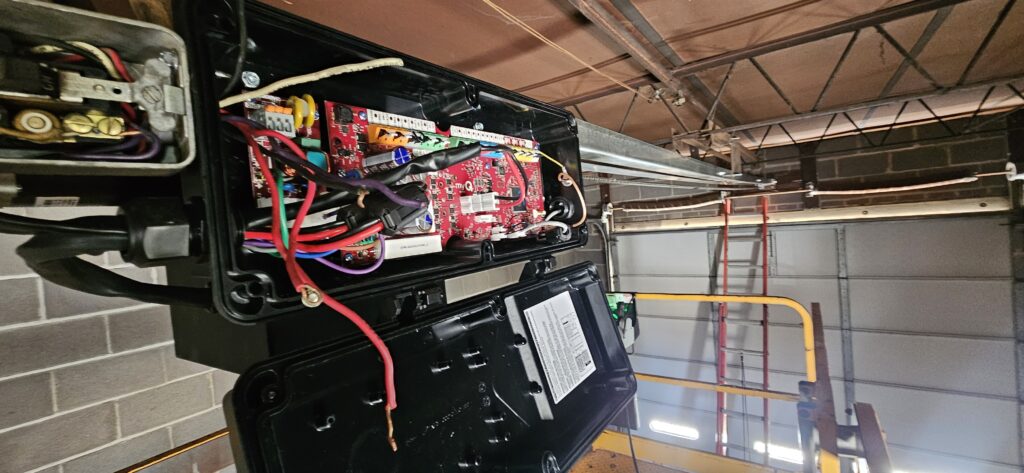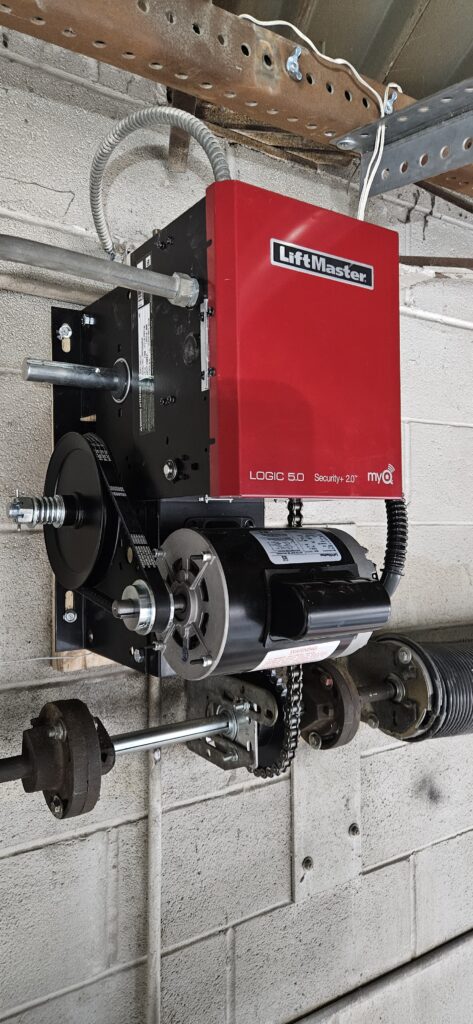Introduction
Installing a commercial garage door opener is essential for businesses that rely on efficient access control and security. Whether for warehouses, service stations, or industrial buildings, a properly installed opener with advanced safety features and advanced security features ensures smooth operation and durability. This guide walks you through the installation process, key considerations, and maintenance tips.
Types of Commercial Garage Door Openers
There are various types of commercial garage door openers, each suited for different applications. Commercial garage door openers are specifically designed to handle larger and heavier doors compared to residential models.
Trolley Openers
Ideal for standard lift sectional doors, trolley openers move along a rail to open and close the door.
Jackshaft Openers
Mounted on the wall beside the garage door, jackshaft openers are designed for high-lift and vertical-lift doors.
Hoist Openers
Used for rolling steel doors and grilles, hoist openers come with a chain hoist for manual operation during power failures.

Challenges in Installing a Commercial Garage Door Opener
Power Requirements
Commercial openers require higher voltage power sources, typically 240V or 480V, which may need electrical upgrades.
Door Balance and Alignment
Improperly balanced doors can strain the opener and lead to premature failure.
Signs That You Need Professional Help
- Door does not open or close fully
- Excessive noise during operation
- Frequent motor malfunctions
Step-by-Step Guide to Installing a Commercial Garage Door Opener
Step 1 – Preparing the Installation Area
- Verify door alignment and balance.
- Ensure the power source meets voltage requirements.
- Emphasize the importance of proper installation to ensure safety and efficiency. Proper installation is crucial for adhering to building codes and safety regulations, and failure to follow these guidelines can have significant implications for both operation and safety.
Important Considerations for Step 1
- Check building codes for compliance.
- Measure clearance for mounting the opener.
Step 2 – Installing the Mounting Hardware
- Secure the opener to the ceiling or wall brackets.
- Ensure stability using heavy-duty fasteners.
How to Ensure Best Results in Step 2
- Use a level to confirm correct alignment.
- Reinforce mounting points for added durability.
Step 3 – Wiring and Electrical Setup
- Connect power supply according to the manufacturer’s instructions.
- Integrate safety sensors and emergency stop mechanisms.
- Incorporate emergency release systems as a critical safety feature, enhancing security with advanced locking mechanisms and auto-reverse features.
Step 4 – Programming and Testing
- Set limit switches for open and close positions.
- Test the opener multiple times to ensure smooth operation.
Benefits of Installing a Commercial Garage Door Opener
Enhanced Security
Automated systems prevent unauthorized access with advanced security features and include rolling code technology.
Increased Efficiency
Reduces manual labor, ensuring faster opening and closing cycles.
Durability and Longevity
High-quality openers withstand frequent use, making them a long-term investment.
Choosing the Right Commercial Garage Door Opener
Factors to Consider
Experience and Certifications
Ensure the manufacturer and installer have industry-recognized certifications.
Customer Reviews and Reputation
Look for positive testimonials and case studies.
Pricing and Service Guarantees
Compare costs and warranties to find the best value for your needs.

Cost Breakdown for Installing a Commercial Garage Door Opener
Cost Factor 1 – Materials & Parts
The choice of motor type, chain or belt drive, and additional features affect the total price.
Cost Factor 2 – Labor and Installation Fees
Professional installation ranges from $500 to $1,500, depending on complexity.
DIY vs. Professional Installation: Which is Better?
- DIY: Lower cost but requires technical expertise.
- Professional: Ensures proper setup with warranty coverage.
Maintenance & Long-Term Care for a Commercial Garage Door Opener
Regular Maintenance Tips
Cleaning and Lubrication
- Use manufacturer-approved lubricants on chains and gears.
- Keep sensors free of dirt and debris.
Checking for Wear and Tear
- Inspect cables and springs regularly.
- Replace worn-out parts promptly.
- Ensure proper maintenance to keep the system functioning optimally.
Seasonal Adjustments
- Adjust opener settings in extreme temperatures to maintain performance.
When to Schedule Professional Inspections
- Annually for routine checks.
- Immediately if issues arise, such as irregular door movement or motor strain.
Conclusion
Installing a commercial garage door opener improves efficiency, security, and longevity. While DIY installation is an option, professional services ensure optimal performance and compliance with safety standards. Regular maintenance extends the lifespan of the opener, reducing long-term costs.
Frequently Asked Questions (FAQs)
How much does it cost to install a commercial garage door opener?
Prices range from $1,000 to $4,000, depending on the model and labor fees.
How long does installation take?
A professional installation typically takes 4–6 hours.
Do I need a professional, or can I install it myself?
If you have electrical and mechanical expertise, DIY is an option. However, professional installation guarantees proper setup and warranty coverage.